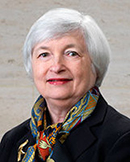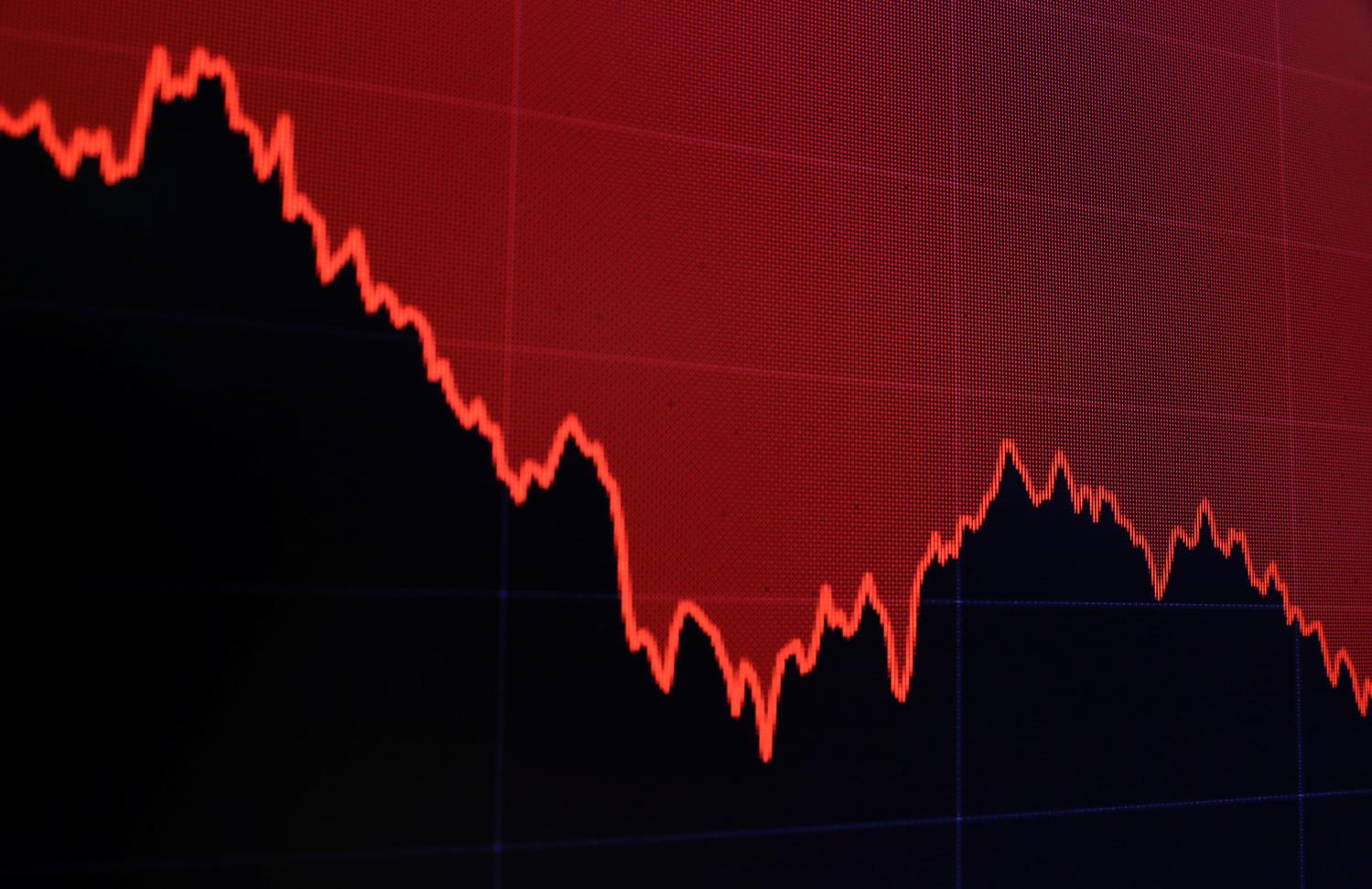Janet Yellen presented these remarks at the Griswold Center for Economic Policy Studies fall symposium on “The Tenth Anniversary of the Financial Crisis” on September 21, 2018. The speech draws on remarks at the Federal Reserve Bank of Kansas City Jackson Hole symposium on August 25, 2017 titled “Financial Stability a Decade after the Onset of the Crisis.”
It’s my pleasure to join you this evening—on the tenth anniversary of the financial crisis—to reflect on lessons learned, progress achieved, and remaining concerns. The events of September, 2008 are etched in my memory. I’m sure that’s true for most of you here tonight. On September 7, Fannie and Freddie were placed into government conservatorship. Bank of America announced that it would purchase Merrill Lynch on September 15 and Lehman filed for bankruptcy that same fateful day. The next day the Federal Reserve made an $85-billion loan to AIG to prevent its bankruptcy and the Reserve Fund broke the buck, which caused a general run on money market funds. In the ensuing days, the Fed opened new facilities to help these funds meet redemptions and to foster liquidity in the market for asset-backed commercial paper.
But before the month was out, the Treasury Department was forced to temporarily guarantee all money market deposits. On this very day 10 years ago—September 21—the Fed approved the applications of Goldman Sachs and Morgan Stanley to become holding companies, ending the era of independent investment banks. But there was more to come. At the end of the month, Washington Mutual was acquired by JP Morgan Chase and the FDIC announced that Citi would acquire Wachovia to avert its failure. Ultimately, Wachovia was acquired by Wells Fargo. On September 29, the House of Representatives rejected the TARP legislation. The Dow fell 778 points. Thankfully, the error was rectified and TARP legislation was signed into law a few days later. Amid this financial turmoil, economic activity contracted and employment plummeted. Nearly 9 million jobs were lost, on net, from the beginning of 2008 to early 2010 and the unemployment rate rose to 10 percent. This was the largest economic contraction in the United States since the Great Depression. And, despite extraordinary policy actions, recovery was painfully slow.
These painful and costly consequences of the crisis prompted a systematic evaluation of “lessons learned”. It was clear that there had been numerous vulnerabilities within the financial system. Financial institutions assumed too much risk, especially related to the housing market. Mortgage lending standards were far too lax and contributed to substantial overborrowing. Housing prices reflected a bubble: the expectation of rapid appreciation in house prices by households and investors created a self-fulfilling prophecy, until the bubble burst. The long period of economic stability beginning in the 1980s had led to complacency about potential risks, and the buildup of risk was not widely recognized. Both market and supervisory discipline were lacking, and financial institutions were allowed to take on high levels of leverage. Distorted compensation schemes within financial firms and inflated ratings by the credit rating agencies also contributed to the risk-taking binge. The buildup of leverage was facilitated by short-term wholesale borrowing: money market mutual funds and asset-backed commercial paper programs allowed the rapid expansion of liquidity transformation outside of the regulated depository sector. And securitization and the development of complex derivatives products distributed risk across institutions in ways that were opaque and ultimately destabilizing.
After the crisis, policymakers thankfully placed overriding priority on enacting a host of supervisory and regulatory reforms to strengthen the financial system, in order to reduce the odds of a future crisis. In the United States, the Dodd-Frank act in 2010 provided a roadmap for these efforts and my colleague, Dan Tarullo, led much of the regulatory work at the Fed. Through the Basel Committee, the Financial Stability Board, and the G20, similar reforms were agreed internationally and put in place in most important financial centers. So where do we stand a decade later?
My assessment is that the reforms put in place significantly boosted the resilience of the U.S. financial system. The risk of runs owing to maturity transformation declined. Efforts to enhance the resolvability of systemic firms promoted market discipline and reduced the problem of too big to fail. And a system was devised to more effectively monitor risks that arise outside the regulatory perimeter. However, the structure created by Dodd-Frank has shortcomings that create ongoing vulnerabilities, such as a limited toolkit to address emerging risks and insufficient regulatory authority for the Financial Stability Oversight Council and its member agencies to address systemic threats. In addition, although Congress in Dodd-Frank created valuable new powers to resolve a failing nonbank financial firm, it simultaneously scaled back the Fed’s emergency liquidity powers, leaving it with a toolkit that could prove inadequate to cope with a situation like the Crash of ‘08.
My assessment is that the reforms put in place significantly boosted the resilience of the U.S. financial system.
Finally, when the Obama administration ended, regulatory reform was a work that was still in progress with significant ongoing efforts. But in contrast to Obama, the Trump Administration has focused on reducing regulatory burden rather than completing unfinished financial stability-related work. After eight years and thousands of pages of rule-writing by multiple financial regulatory agencies, it is certainly appropriate to simplify regulations that impose unnecessary burdens, particularly on small community banks. We should also revisit regulations that are overly complex or have created unintended consequences. But I’m greatly concerned that the regulatory work needed to address financial stability risk has stalled. And, as I will discuss, there have been worrisome reversals. In the remainder of my remarks I’ll summarize some of the decade’s key accomplishments—reasons I see the “financial stability glass” as now half full. But I’ll also enunciate some concerns that, in my view, justify characterizing it as half empty.
Starting with the banking system, the good news is that it is better capitalized. The quantity and quality of capital required relative to risk-weighted assets have been increased substantially and capital requirements are higher for the largest, most systemic firms. This lowers the risk of distress at such firms and encourages them to limit activities that could threaten financial stability. Among the largest banks, Tier 1 common equity capital has more than doubled since 2009. Importantly, the largest U.S. banks participate in annual stress tests, which are the most important supervisory innovation since the financial crisis. These tests contribute to greater loss-absorbing capacity. The CCAR also improves public understanding of risks at large banking firms, providing a forward-looking examination of firms’ potential losses during severely adverse economic conditions. The stress tests have contributed to significant improvements in risk management at the largest firms.
All that said, there remains an argument—most passionately articulated by Anat Admati at Stanford—that capital requirements should be higher. The imposition of these requirements should reflect a cost-benefit judgment. Higher levels of bank capital mitigate the risk and adverse effects of a financial crisis but raise the cost of intermediation in normal times. Even now, U.S. capital requirements are closer to the lower, not the higher, end of those that could be justified by cost-benefit analysis. In addition, the stress tests do not yet capture important avenues for the propagation of systemic risk. For example, they generally do not directly take account of second-round effects of stress on the financial system, such as the possible fire sale of assets by financial firms in need of capital or funding. Such sales can further depress asset values of other firms below levels resulting from an initial economic or financial shock. These effects are harder to model but very important for a stress test designed to achieve financial stability objectives.
Turning next to maturity transformation, post-crisis reforms have succeeded in addressing some significant risks relating to deposit-like liabilities outside the traditional banking sector. New SEC regulations require prime institutional money market funds to use a floating net asset value. That shift has made these funds, that proved susceptible to runs in the crisis, less attractive as cash-management vehicles. Their assets under management have decreased substantially. The changes at money funds have also helped reduce banks’ reliance on unsecured short-term wholesale funding, since prime institutional funds were significant investors in those bank liabilities. Liquidity risk at large banks has been further mitigated by a new liquidity coverage ratio requirement. And a capital surcharge for global systemically important banks (G-SIBs) links the required level of capital for the largest banks to their reliance on short-term wholesale funding. Large banks have cut their reliance on short-term wholesale funding essentially in half and hold significantly more high quality, liquid assets.
Since the crisis, concerns relating to maturity transformation have arisen in connection with open-end mutual funds, which commonly offer immediate redemption to investors even though some funds hold assets that are quite illiquid. If funds of this type experience significant withdrawals and lack sufficient liquidity to cover them, they may be unable to meet redemption obligations without selling assets such as corporate bonds, which have always been relatively illiquid and are now held in large quantities. Under stressed conditions, such sales by open end funds would potentially create significant fire-sale externalities and runs on similar funds. The FSOC highlighted this concern in its report on asset management in 2016 and the SEC finalized a regulation to address this risk in October 2016. The SEC has recently delayed implementation of some provisions but has not rolled back the regulation. A further concern pertains to hedge funds. FSOC found in 2016 that a few large hedge funds had taken on highly levered positions. FSOC judged it appropriate to investigate further but now looks to have dropped this issue from its agenda.
Turning to “too big to fail,” Dodd Frank created an important new resolution process for systemically important nonbank financial firms. In 2008, there was no resolution process other than bankruptcy available to resolve the failure of such a firm. That left policymakers with the terrible choices of a destabilizing collapse, as happened with Lehman, or a bailout, as the Fed arranged for AIG and Bear Stearns. Title II of Dodd-Frank provided a new alternative resolution mechanism for systemically important firms that can be used instead of bankruptcy proceedings when it is necessary to preserve financial stability. The orderly liquidation authority contains a number of tools, including liquidity resources and temporary stays on the termination of financial contracts, that would help protect the financial system and economy from the severe adverse spillovers that could occur if a systemic firm failed. In addition, the Congress required that the largest banks submit living wills that describe how they could be resolved under bankruptcy. The Federal Reserve and FDIC have worked with these banks to insure that these documents promote real changes in organizational and capital structure and liquidity management that would improve resolvability. Moreover, the Federal Reserve has mandated that systemically important banks meet total loss-absorbing capacity requirements, which require them to maintain long-term debt adequate to absorb losses and recapitalize the firm in resolution. These enhancements in resolvability protect financial stability and help ensure that the shareholders and creditors of failing firms bear losses. Moreover, these steps promote market discipline, as creditors—knowing that they will bear losses in the event of distress—demand prudent risk-taking, thereby limiting the problem of too-big-to-fail.
But I’m greatly concerned that the regulatory work needed to address financial stability risk has stalled.
While the new OLA process provides a valuable resolution method, it will be extremely challenging to carry out in “real time.” The firm’s reorganization would typically need to be completed over a “crisis” weekend and success requires a very high degree of international coordination with a great deal of advance planning among financial authorities here and abroad. Work of this sort received high priority at the Fed and at the Bank of England during the Obama years, but it remains very much a work in progress. Moreover, while it would be challenging, but conceivable, to resolve a single systemic firm hit by an idiosyncratic shock with the new tools that are available, I view the prospects for resolving multiple firms, in a situation characterized by general financial panic—the situation that prevailed in September 2008—as dim. For this reason, I am very concerned that Dodd Frank eliminates the Fed’s legal authority under its 13(3) emergency lending powers to make loans to support an individual systemic institution that would otherwise fail. The law permits the Federal Reserve to implement “broad-based lending programs” to support liquidity in markets—programs like the commercial paper lending facility or the TALF—the asset backed securities lending facility—that the Fed used successfully after the crisis. But loans like those made to support AIG and JP Morgan Chase’s acquisition of Bear Stearns are now strictly forbidden. Going further, I believe that a strong case can be made for allowing the Fed, on an ongoing basis and not just in a financial crisis, to make its discount window available to the broker-dealer subsidiaries of bank holding companies. These entities are now supervised by the Fed and I believe that normal discount window access would diminish the odds of destabilizing runs.
The financial crisis of 2008 was centered outside the regulated banking sector and, in recognition of this fact, Dodd-Frank mandated regulatory changes pertaining to shadow banking. Some of the most important changes pertain to derivatives. Recall that the events affecting AIG reflected the buildup of large counterparty exposures through derivatives between market participants and the firm that were both inappropriately risk-managed and opaque. To mitigate the potential for such risks to arise again, new standards require central clearing of standardized over-the-counter derivatives, enhanced reporting requirements for all derivatives, and higher capital as well as margin requirements for noncentrally cleared derivatives transactions. These changes are important and promote greater safety in derivatives markets. But they’ve also created a new class of systemically important financial market utilities—namely the central counterparties or CCPs—whose failure, given their enhanced roles, could trigger a financial crisis. These “utilities” need to be carefully supervised and to meet high standards to guarantee their safe operation. This is another area where work has been in progress but remains incomplete.
In the aftermath of the financial crisis many countries established Financial Stability Committees charged with monitoring and addressing financial stability risk. The U.S. counterpart, the Financial Stability Oversight Council (FSOC) has a similar charge. The most important tool granted by Congress to the Council is the ability to designate nonbank financial institutions that are systemically important for prudential regulation by the Federal Reserve. The purpose of designation is to help guard against the risk that vulnerabilities in firms like AIG that are outside the existing regulatory perimeter grow to levels that jeopardize financial stability. Between 2013 and 2015, the FSOC designated four firms for such supervision: AIG, GE Capital, Prudential Insurance and MetLife. Two of these firms—GE Capital and AIG—chose to radically alter their business models. Those decisions led to substantial reductions in the potential financial system repercussions of their material distress. In recognition of these changes, both firms were subsequently “de-designated” by the FSOC—decisions I supported. In contrast, MetLife sued to repeal its designation and, in 2016, a district court ruled in its favor, overturning the designation. The Obama Justice Department appealed the lower court’s ruling with the FSOC fully supportive of that decision at the time. Indeed, the reasoning of the lower court needed to be challenged, because that Court’s interpretation of Dodd Frank, if accepted, set standards that would make future designations all but impossible. It required that a full-blown cost-benefit analysis and an assessment of the likelihood of the firm’s material financial distress become part of the designation process. Regrettably, the Trump Administration chose to drop the appeal—a decision I strongly opposed. Instead of appeal, on the contrary, the Trump Administration has expressed support for the requirements that, in effect, were imposed by the lower court finding. That decision all but eliminates the chances of future designations. Prudential has filed an appeal to be de-designated. A Trump Administration Treasury report on designation argues FSOC should regulate activities, rather than firms that pose systemic risk. I agree that it’s important to regulate activities that heighten systemic risk and, in many cases, this approach makes more sense than regulating firms. But individual firms, such as the pre-crisis AIG, also pose systemic risks. When that’s the case, it is important to supervise and regulate them.
An important change since the financial crisis is that the Federal Reserve now engages in extensive efforts to monitor the entire financial system to detect emerging risks. Such monitoring efforts are relevant both to its supervision of bank holding companies and its lender of last resort responsibilities. Prior to the crisis, in contrast, the Federal Reserve had supervisory authority for the largest banking organizations, and emergency lending powers to address crisis situations, but no systematic framework for monitoring the financial system as a whole. Emerging threats to the financial system will surely take new forms in the years ahead and such vigilance is essential for timely action to be at all possible. However, Dodd-Frank envisioned that the FSOC, as an organization, would independently monitor the financial system for emerging risks and it created the Office of Financial Research as an independent unit within Treasury to provide FSOC with its regular assessments. Over the last year, the Trump Administration has substantially cut this agency’s budget and diminished its staffing. Those are regrettable developments that, in my view, highlight the low priority that it attaches to addressing systemic risks.
It is also important to recognize that there are very few macroprudential policy tools in the United States to deal with threats that are detected in the monitoring process. One available tool is the countercyclical capital buffer—an additional capital requirement that the Federal Reserve can raise during times when risks are judged to be building and later release when the financial system is under stress. However, this buffer applies only to the largest banking organizations in the United States. The stress tests can be viewed as a second macroprudential tool because the scenarios that are incorporated in a particular year can focus on emerging threats. The results both promote adequate capital to guard against the risk in question and also provide information about the vulnerability of the most systemic banks. For example, tests in recent years have focused on the risks from elevated commercial real estate prices. However, many countries have armed their financial stability committees with macroprudential tools that U.S. regulators lack such as minimum loan to value ratios, debt-to income ratios and affordability criteria in mortgage lending. Housing is often at the center of financial crises in advanced economies and recessions caused by a housing busts tend to be more severe than other downturns. Countries that fear the consequences of an emerging housing bubble use such tools to limit credit growth and the rate of house price appreciation. No such tools are available in the United States.
I would also note that it remains challenging for the banking regulators to address behavior that gives rise to systemic risk when the concern extends beyond the safety and soundness of a particular institution. There is a need for greater clarity about whether FSOC agencies have explicit responsibilities for financial stability or only responsibilities relating to the safety and soundness of supervised institutions and investor protection. Recall that, in the run-up to the crisis, financial institutions were securitizing poorly underwritten and risky mortgage loans. Supervisors were aware of these practices but addressed them only to the extent that they posed a threat to banking organization, say because the firm warehoused the loans on its balance sheet before unloading them into the market. In recent years, similar concerns have arisen with respect to corporate leveraged loans. Shared national credit exams and bank supervisors noted egregious underwriting deficiencies, weakening covenants and escalating credit risks. Because many such loans are securitized or sold into the market, they pose limited risk to the safety and soundness of individual financial institutions. However, these loans may pose risks to financial stability similar to those associated with securitized subprime mortgages a decade ago. The banking agencies issued guidelines in 2013 that were intended to improve underwriting standards and address increased credit risks. Over the last few years, however, Congress and the industry have pushed back against these standards. Recently, Joseph Otting, Trump’s Comptroller of the Currency, indicated that he would allow such loans as long as the originating bank has adequate capital to bear losses—a perspective that is “micro” and not “macroprudential.” Following this comment, the degree of leverage in new lending has reportedly shot up. In addition, the DC circuit court recently ruled that packagers of these loans do not need to meet the “skin in the game” requirements that were mandated by Dodd-Frank. The entities that hold leveraged loans appear to be largely unlevered institutions and individuals, which limits the financial stability risk posed by this lending. Nevertheless, developments in this area are reminiscent of the pre-crisis pushback that occurred against any meaningful supervisory restrictions on risky commercial real estate lending particularly for land and construction development—lending that fueled the subprime housing boom.
Let me wrap up. On this tenth anniversary of the financial crisis, let’s remember what a devastating toll it took on American households and businesses. We should resolve, as a country, to do all in our power to avoid a repeat. In this regard, there’s been meaningful progress to improve the resilience of the financial system. But new threats will arise that will be hard to detect and we must remain vigilant in our monitoring efforts. We can’t afford to fall asleep at the switch. Our current regulatory system suffers from significant deficiencies and the regulatory work undertaken after the crisis is still incomplete. The current focus on reducing regulatory burden is diverting attention from financial stability work and, as I’ve noted, has undermined progress in some significant areas to address the very real risks of financial instability.






